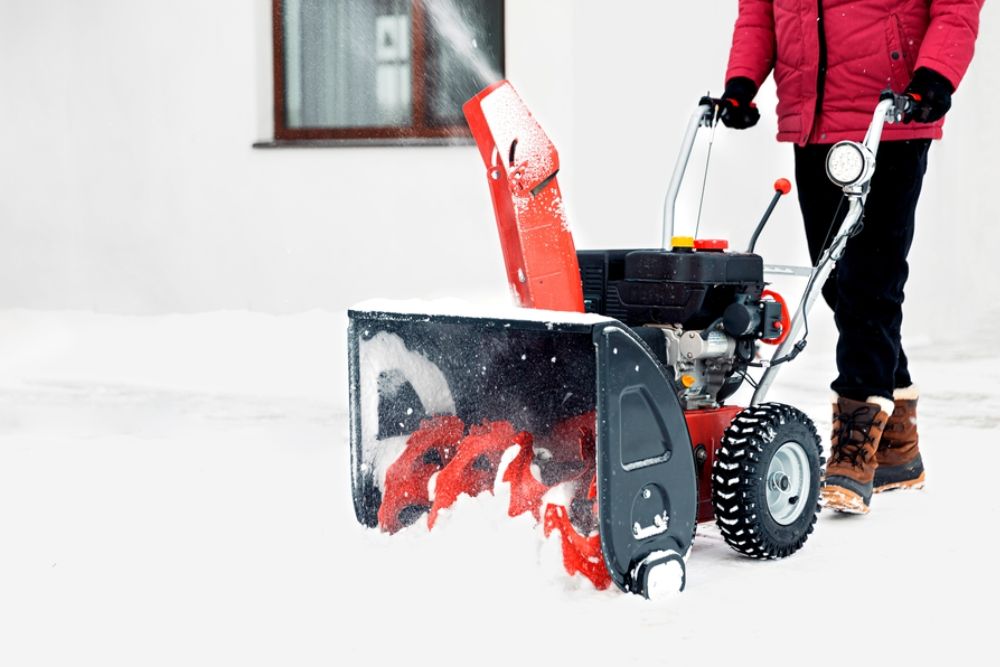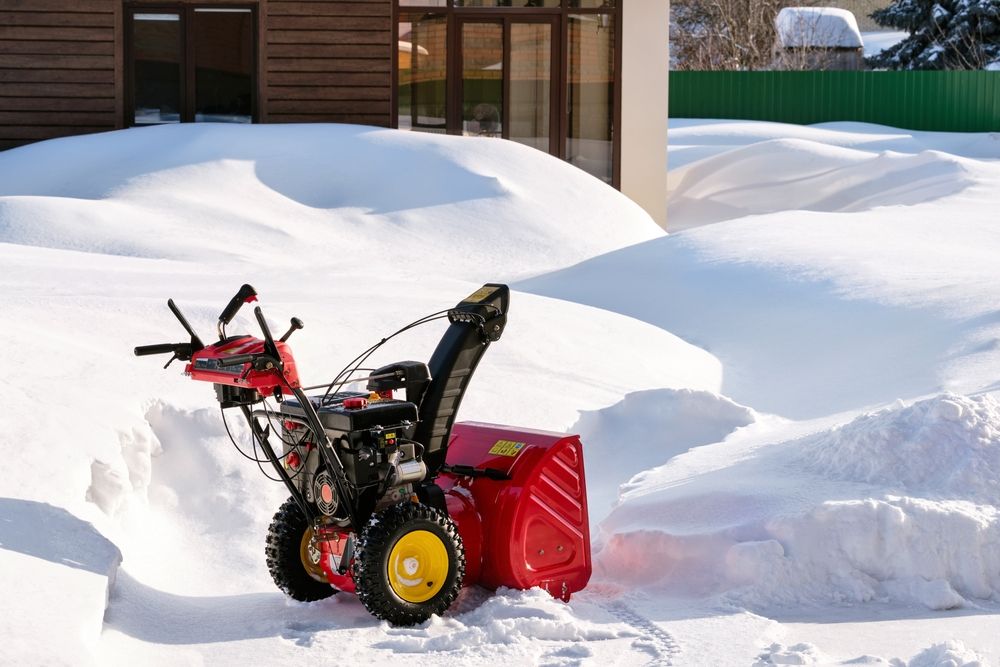When winter’s white blanket descends and your driveway turns into a frosty obstacle course, a reliable snow blower can make clearing chores safer and quicker. But with multiple designs, power sources, and sizes on the market, choosing the right one for your region’s snowfall and property layout can be challenging. Whether you deal with light dustings or heavy, wet drifts, this guide will help you navigate the essential considerations—like stage types, power requirements, and convenience features—so you can select a snow blower that meets your winter needs and budget.
1. Why a Snow Blower Might Be Right for You
Why It Matters
Manual shoveling can be laborious and even risky—especially for those prone to back or cardiac issues. A snow blower lets you clear larger areas with less physical strain. Plus, it often saves time and reduces the risk of slip-and-fall accidents when hauling heavy snow.
Benefits
- Efficiency: Clears your driveway, sidewalks, and walkways faster than manual shoveling.
- Reduced Strain: Minimizes repetitive lifting motions that can stress your back, shoulders, and heart.
- Better for Heavier Snow: Even a moderately powered snow blower can handle compacted or wet snow more effectively than a shovel.
Takeaway
If your region experiences moderate to heavy snowfall or you have a significant area to clear, investing in a snow blower can ease winter’s burden, letting you focus on safer and more comfortable snow removal.
2. Single-Stage vs. Two-Stage vs. Three-Stage
Why It Matters
Snow blowers primarily break down into different “stages,” which affects how the machine collects and discharges snow. The more “stages,” the more powerful and capable the machine, typically.
Stage Breakdown
- Single-Stage
- How It Works: Uses one auger that both scoops up the snow and propels it out through the chute. Often smaller, more lightweight.
- Ideal For: Light to moderate snow (usually up to about 8 inches), smaller driveways, paved surfaces.
- Pros: More affordable, easier to maneuver, compact.
- Cons: Struggles with deeper or heavier snow, not as powerful for large areas or gravel driveways.
- Two-Stage
- How It Works: Has an auger to gather snow and a separate impeller to throw it out the chute, giving more throwing power.
- Ideal For: Moderate to heavy snowfall, bigger spaces, and works better on gravel since the auger doesn’t touch the ground directly.
- Pros: Handles deeper, wetter snow, can toss snow further and faster.
- Cons: Pricier and heavier than single-stage; more complex maintenance.
- Three-Stage
- How It Works: Adds an accelerator or extra auger that breaks up heavy snow or ice chunks before the impeller throws it.
- Ideal For: Very heavy, wet snowfall or large, rural driveways where storms can pile high drifts.
- Pros: Most powerful and efficient design, clearing big piles quickly.
- Cons: Highest cost, largest machines—overkill for light snowfall or small suburban driveways.
Takeaway
Choose single-stage if you face relatively lighter snowfalls or smaller areas. Two-stage is a popular middle ground for heavier or more frequent snow, while three-stage is for truly extreme winter conditions or large properties.
3. Gas, Electric, or Battery?
Why It Matters
Power source affects your machine’s performance, maintenance needs, and ease of use. While gas models historically dominate for heavy-duty tasks, electric or battery-powered options have grown in capability.
Main Options
- Gas-Powered
- Pros: Typically the most powerful, ideal for thicker snow or large areas. Often come in two- or three-stage designs.
- Cons: Noise, emissions, and maintenance (oil changes, spark plugs, fuel storage). Heavier to maneuver.
- Corded Electric
- Pros: Lighter, no emissions, minimal maintenance. Good for small driveways with lighter snow.
- Cons: Limited by cord length; unwieldy if you have a large property or obstacles. Typically single-stage only.
- Battery-Powered (Cordless)
- Pros: No cord restrictions, quieter, less maintenance, zero emissions. Lighter than gas.
- Cons: Battery runtime can limit continuous clearing; might struggle with very deep or wet snow. Usually best for moderate snowfall.
Takeaway
For small urban or suburban driveways with light to moderate snow, electric or battery can be sufficient (and convenient). Gas is recommended for consistent heavy snowfalls or large areas.

4. Consider Auger, Width, and Intake Height
Why It Matters
The cutting width and intake height determine how much snow you can clear per pass. If you get frequent 10-inch accumulations, a bigger intake or higher-stage blower can prevent constant stalling.
Key Points
- Clearing Width: Typically ranges from around 18–45 inches. Wider means fewer passes, but also heavier and less maneuverable in tight spots.
- Intake Height: More height means you can tackle deeper snow in a single pass—especially important if you get frequent storms exceeding 8–10 inches.
- Rubber vs. Steel Auger: Single-stage blowers often use rubber augers that contact the ground, suitable for paved surfaces but might not handle gravel well. Steel augers in two-/three-stage blowers are more robust for varied surfaces.
Takeaway
Assess how deep your snow typically gets. For moderate accumulations, a smaller, single-stage machine might suffice; for big drifts or repeated storms, a taller intake and robust auger are advantageous.
5. Maneuverability and Drive Features
Why It Matters
If you have slopes, tight corners, or a physically demanding property, maneuverability and self-propelled drive can significantly ease the burden. Clearing big drives by pushing a heavy blower can be exhausting without assistance.
Drive Features
- Self-Propelled: Many two-stage blowers offer multiple speeds (forward and reverse), letting the machine do most pushing. Great for long or uphill driveways.
- Electric Start: No more yank-pull on recoil cords—just press a button to fire up the engine, especially helpful in cold conditions.
- Power Steering: Some high-end blowers let you turn each wheel independently for easy pivoting.
Takeaway
While these add cost, if you have a large or uneven driveway, self-propelled and steering features can save serious time and body strain.
6. Budget and Possible Upgrades
Why It Matters
Snow blowers range widely, from under $200 for a basic corded electric single-stage to well over $2,000 for top-tier three-stage gas monsters. Evaluate your typical snowfall, property size, and frequency of usage to avoid overspending or underspending.
Price Tiers
- Basic Electric Single-Stage ($100–$300): For minimal, light snow. Not for large storms or big areas.
- Mid-Range Gas Single-Stage ($250–$500): Decent performance for moderate snow, but might struggle above 8–10 inches.
- Two-Stage Gas ($600–$1,000): Good blend of power and convenience, suitable for frequent moderate to heavy snow.
- High-End Two-Stage or Three-Stage ($1,000+): Ideal if you regularly deal with significant snowfalls or large rural driveways.
Cost-Saving Tips
- Off-Season Sales: Buying in spring or summer could snag discounts.
- Refurbished or Used: Check local listings for gently used models—inspect carefully for engine or auger wear.
- Maintenance: A cheaper blower poorly maintained might cost more in repairs or early replacement. Don’t skimp on basic upkeep.
Takeaway
Aim for a model that reliably handles your region’s typical worst-case scenario. Slightly overshooting power can be better than constantly struggling with a too-weak machine.
7. Maintenance and Longevity
Why It Matters
A well-maintained snow blower can last a decade or more, ensuring consistent winter relief. But ignoring routine oil changes, spark plug checks, or belt replacements can lead to breakdowns mid-storm.
Care Essentials
- Oil Changes (Gas Models): Follow the manufacturer’s schedule—often annually or after a set number of hours.
- Spark Plug and Air Filter: Replaced as per guidelines, ensures consistent starts and performance.
- Shear Pins: Protect the auger and gearbox if you hit a rock or ice chunk; keep extras on hand.
- Fuel Stabilizer: If storing the blower for months, a stabilizer helps prevent stale fuel issues.
- Electric/Battery Maintenance: Store batteries in moderate temperatures, avoid leaving them fully discharged or fully charged for prolonged periods.
Takeaway
Buying from a brand with accessible parts and service centers can simplify repairs. Even the best blower needs periodic attention—this is a manageable routine if you schedule it after each season.
Selecting the right snow blower hinges on the type of snowfall and property you have. If you typically face light, infrequent flurries in a small yard, an electric or small single-stage model can handle the job. For heavier, more frequent storms or large driveways, a robust two-stage or three-stage gas blower might be worth the investment—and could significantly reduce your shoveling drudgery. Remember to weigh convenience features like self-propelled drive, power steering, and easy electric starts, especially if you’re dealing with large or sloped areas.
Once you’ve decided on a blower, remember that consistent maintenance—oil changes, spark plug checks, and the occasional belt or shear pin replacement—helps you get the most from your purchase. Look for reputable brands that offer solid warranties and easy-to-find replacement parts, ensuring winter’s fury never catches you unprepared. With the right selection, your new snow blower can transform how you handle even the most stubborn drifts, making winter less of a chore and more of a season to enjoy.



